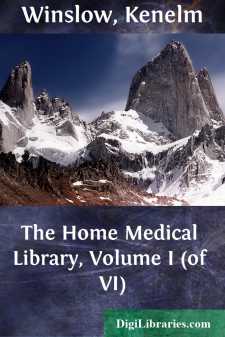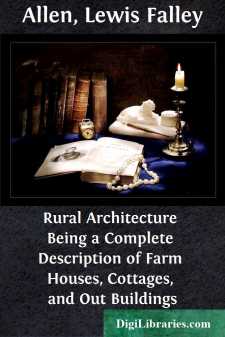Categories
- Antiques & Collectibles 13
- Architecture 36
- Art 48
- Bibles 22
- Biography & Autobiography 813
- Body, Mind & Spirit 142
- Business & Economics 28
- Children's Books 17
- Children's Fiction 14
- Computers 4
- Cooking 94
- Crafts & Hobbies 4
- Drama 346
- Education 46
- Family & Relationships 57
- Fiction 11829
- Games 19
- Gardening 17
- Health & Fitness 34
- History 1377
- House & Home 1
- Humor 147
- Juvenile Fiction 1873
- Juvenile Nonfiction 202
- Language Arts & Disciplines 88
- Law 16
- Literary Collections 686
- Literary Criticism 179
- Mathematics 13
- Medical 41
- Music 40
- Nature 179
- Non-Classifiable 1768
- Performing Arts 7
- Periodicals 1453
- Philosophy 64
- Photography 2
- Poetry 896
- Political Science 203
- Psychology 42
- Reference 154
- Religion 513
- Science 126
- Self-Help 84
- Social Science 81
- Sports & Recreation 34
- Study Aids 3
- Technology & Engineering 59
- Transportation 23
- Travel 463
- True Crime 29
Fire Prevention and Fire Extinction
by: James Braidwood
Categories:
Description:
Excerpt
The history of mankind, from the earliest times, has been one of alternate peace and war with fire. The immeasurable value of its obedience, and the fearful consequences of its insubordination, have, in all ages, made its due subjection one of the most important conditions of even human existence itself. As camps and trading stations grew into populous cities, the dangers of fire were both multiplied and aggravated. Its ravages in the ancient capitals of the world are matters of history; and it is established that something like organization was extended to the means then employed for suppressing conflagrations. Even the fire-engine itself, in a practicable, although imperfect form, was described and illustrated by a sectional working drawing, by Hero of Alexandria, in a book written by him more than one hundred years before the Christian era. In its many translations, from the original Greek into Latin and into modern tongues, Hero's book, with its remarkable series of drawings, still occupies a place in the mechanical literature of our own time. But, although the construction of the fire-engine was thus known two thousand years ago, we have no actual evidence of its use until within the last two centuries; and within the whole compass of English history, at least, we know that nothing like discipline and organization, in the modern sense of the terms, were introduced into the management of fire apparatus until a time quite within the recollection of the middle-aged men of our own day. If there be anything apparently improbable in this fact, we need only recollect that many of the grandest triumphs of human genius, with which we are already so familiar, are not yet forty years old. The modern system of English fire brigades belongs wholly to the period of railways, steam navigation, and electric telegraphs, and it owes nearly all to the genius and disciplined heroism of a single individual, James Braidwood, who, but little more than four years ago, fell—as nobly for himself as sadly for others—at his chosen post of duty. What, when he first gave his energies—indeed, his whole heart to it, was but the rough and unskilful employment of the fireman, became under Mr. Braidwood's command and his infusing spirit of order and intelligence, as distinguished from reckless daring, a noble pursuit, almost rising in dignity to a profession, and indeed acknowledged as such by many, and significantly, although indirectly, by Royalty itself.
Until the year 1833, not only the parish engines of the metropolis, numbering, as they did, about three hundred, but the engines also of the Fire Insurance Companies, were comparatively inefficient and often out of order, while they were also under the most diverse, if not irresponsible management. There were no really trained firemen, and those who controlled and worked the engines were oftener in antagonism with each other than acting in concert. The parish engines were in the care of the beadles, and in one case a beadle's widow, Mrs. Smith, for some years commanded one of the city engines. The energies of each band of firemen were commonly reserved for the protection of property only in which their own insurance company or parish was immediately interested. As a rule, whatever water was thrown upon a burning building was dashed against the walls, windows, and roof from the outside only, very little if any really reaching the actual seat of the fire within. As a consequence, fires, which are now quickly "got under," were then left to burn themselves out, the spreading of the fire being prevented either by deluging the contiguous buildings with water, or by pulling them down altogether.
James Braidwood was born in Edinburgh in the year 1800. His father was a well-known upholsterer and builder, who appears to have chosen for his son the profession of a surveyor. To this end he was entered at the High School, then under the rectorship of Mr. (afterwards Professor) Pillans, and here, and subsequently under private masters, the youth received a sound education in the branches most appropriate to his intended pursuit in life. He was for some time engaged in his father's business, and thereby gained an amount of practical knowledge, which was of, perhaps, as much service to him in his subsequent career as a fireman, as it would have been had he adopted the profession originally chosen for him. Young Braidwood was an apt student, a fact, perhaps, sufficiently attested afterwards by his successful authorship, at the age of thirty, of the only English work then extant upon the fire-engine and its proper management. He read much, wrote well, was a good draughtsman, and had a sound knowledge of mechanics. But whether his powers required wider scope than a surveyor's practice could offer, or whether, more than forty years ago, and in Edinburgh, the chances of professional success were very much less than now, James Braidwood soon turned his mind to what became the great work of his life. He was becoming known for activity and a high order of personal courage, and there were those in place and power who saw in him the other elements of character which go to make a successful leader of men. He was soon, and when but twenty-three years of age, made the superintendent of the Edinburgh fire engines, and he almost as soon began to reform their inefficient and vicious system of management. He had held his post but three weeks, however, when the series of fires broke forth which still bear the name of the Great Fire of Edinburgh....





![How to Sing
[Meine Gesangskunst]](https://digilibraries-com.s3.eu-central-1.amazonaws.com/covers/ce5d735a-24bd-4e45-bc59-b94dfd4cd5fa.jpg)






